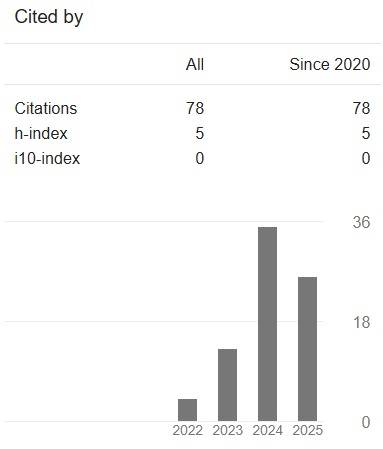Comparison of factor of safety using different method of analysis for slope stability
DOI:
https://doi.org/10.24191/jaeds.v1i1.28Keywords:
slope stability analysisAbstract
Currently, the construction of slope is increasing, thus, the risk of slope to fail also increase. The series of landslide happen to the man-made slope has been recorded since in the early of 1993 until now. Many efforts such as treating the critical slope, redesigned the failed slope, and analyze the stability of the slope have been done. However, the landslide is still happening in Malaysia. The factor of safety (FOS) from the stability analysis that has been used might not be adequate to determine the safety of the slope in Malaysia. Therefore, in this study, the optimum factor of safety is obtained by using three methods of slice, Bishop’s Simplified method, Spencer method, and Morgenstern-Price method which have been used in many projects. A study place is selected in Ladang Balau, Semenyih, in Selangor and from the CIU test, the important soil parameter for slope is extracted for analysis of slope stability using SLOPE/W and manual calculation. The lambda for Spencer method and Morgenstern-Price method was generated for further discussion on the relationship between lambda and factor of safety. The data generated from both calculation method, from manual and software, were discussed and next the ideal method to achieve the optimum factor of safety determined. The factor of safety for every method basically are influenced by the interslice shear force presence but not Bishop’s Simplified method as moment equilibrium is insensitive towards interslice force function. For lambda, the factor that influenced the value is the function used; constant and half-sine function, however, for Bishop’s Simplified method, the lambda is equal to zero as the method ignored the interslice shear force. The Morgenstern-Price method has been chosen to be the best method to generate a good factor of safety.
Downloads
References
Seequent. (2021). Stability modeling with GeoStudio 2021. Calgary, Alberta, Canada.
Rahman, H. A. & Mapjabil, J. (2017). Landslides Disaster in Malaysia: An Overview. Health and the Environment Journal, 8(1), 58-71. https://doi.org/10.1097/BLO.0b013e31814b9304
Nuric, A., Nuric, S., Kricak, L., & Husagic, R. (2013). Numerical Methods in Analysis of Slope Stability. International Journal of Science and Engineering Investigations, 2(14), 41-48. https://doi.org/2251-8843
Sutejo, Y., & Gofar, N. (2015). Effect of area development on the stability of cut slopes. Procedia Engineering, 125, 331–337. https://doi.org/10.1016/j.proeng.2015.11.071
Reale, C., Gavin, K., Prendergast, L. J., & Xue, J. (2016). Multi-modal Reliability Analysis of Slope Stability. Transportation Research Procedia, 14, 2468–2476. https://doi.org/10.1016/j.trpro.2016.05.304
Abramson, L. W., Lee, T. S., Sharma, S., & Boyce, G. M. (2002). Slope stability and stabilization methods. John Wiley & Sons.
Jabatan Kerja Raya Malaysia. (2016). Geotechnical Engineering Handbook JKR.
Cruden, D. M., & Varnes, D. J. (1992). Landslides: investigation and mitigation. Chapter 3-Landslide types and processes. Transportation Research Board Special Report, (247).
Budhu, M. (2011). Soil Mechanics and Foundations (3rd Edition). John Wiley & Sons.
Knappett, J., & Craig, R. F. (2012). Craig’s soil mechanics. CRC press.
Downloads
Published
How to Cite
Issue
Section
License
Copyright (c) 2021 Norfarah Nadia Ismail, Ahmad Bukhari Ramli, Siti Noorliyana Mohd Pami

This work is licensed under a Creative Commons Attribution 4.0 International License.









